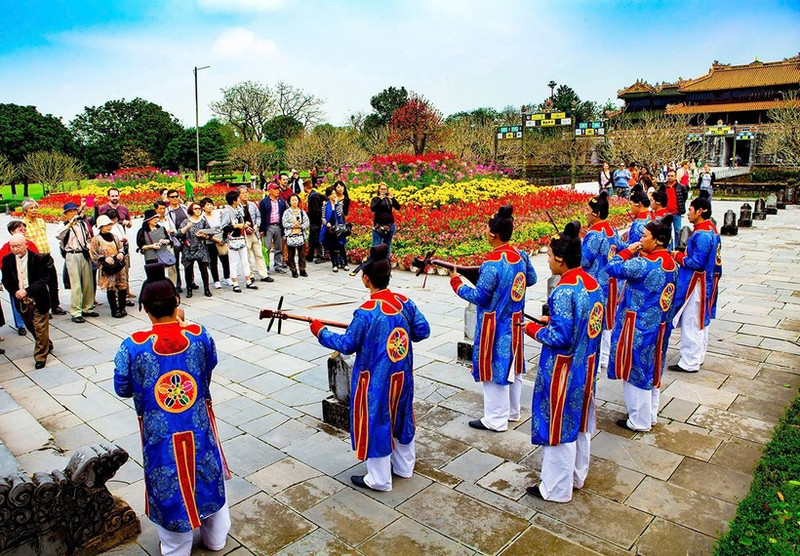Approaches to heritage
With more than 4,000 years of civilisation, Viet Nam possesses a rich treasury of heritage, from historical sites to intangible cultural values. These are invaluable assets of Vietnamese ethnic minority communities, part of the cultural heritage of humanity, which contribute to positioning Viet Nam’s cultural identity and brand on the international stage.

Cultural heritage can be regarded as living evidence of history, a bridge linking the past with the present and the future, as well as a core resource affirming national identity. However, shortcomings have emerged in heritage preservation and promotion that require timely adjustments.
Heritage speaks out
According to the statistics of the Ministry of Culture, Sports and Tourism in 2025, the whole country has more than 40,000 historical sites, including nine world heritage sites recognised by UNESCO. In addition, 15 intangible cultural heritages, such as Hue Royal Court Music, the Worship of Hung Kings, and the Space of Gong Culture in the Central Highlands, have also been named on UNESCO’s lists. “Cultural heritage is not only a material asset but also a spiritual resource, a foundation to build a civilised and sustainable society,” Assoc. Prof. Dr. Bui Hoai Son emphasised.
Although Viet Nam owns a vast system of cultural heritage, its current approach reveals many inadequacies. If there are not adjusted promptly, these may diminish the value of heritage and pose serious challenges to protection, even threatening the long-term existence of national cultural values.
A prominent issue is the lack of investment in material and human resources, particularly in remote areas. Insufficient funding for restoration and maintenance has led to the serious deterioration of many historical sites.
Moreover, many intangible cultural heritages, such as folk art forms of ethnic minorities, are gradually fading due to a lack of people to teach, successors, and financial support policies for reconstruction and preservation. The ministry’s report also points out overlapping and inconsistent management, especially inter-provincial heritage sites, which causes difficulties in protection efforts. Budget allocations are not reasonable, and there is a lack of effective coordination mechanism between central and local authorities, resulting in many relic sites and intangible heritages being neglected while resources concentrate on famous destinations.
Overexploitation of heritages for commercial purposes is also concerning, damaging authenticity and cultural value of the heritages. In recent years, organisation of inappropriate events and construction of projects inharmony with the landscape at heritage destinations have reduced their sacredness and threatened their integrity. For example, at the beginning of 2025, thousands of people entered a cave in Bai Tu Long Bay (Quang Ninh Province) for entertainment and teambuilding activities, raising fears of “polluting” the heritage space.

More recently, in May 2025, at the Complex of Hue Monuments, a tourist climbed over the protective barriers, sat on the Nguyen Dynasty throne — a national treasure at Thai Hoa Palace — and damaged its armrest, causing shock and outrage among visitors. Such incidents highlight shortcomings in the management of important relic sites.
“Losing heritage means losing part of the nation’s soul — something no material value can reimburse,” shared Prof. Dr. Nguyen Chi Ben, former Director of the Viet Nam National Institute of Culture and Arts Studies.
Responsibility of today and tomorrow
Viet Nam laid the foundations for heritage conservation from early, through turning-point policies reflecting a strategic vision in protection and promotion of cultural heritage values. Right after the county won the independence, on November 23, 1945, President Ho Chi Minh signed Decree No. 65/SL, laying the first legal basis for protecting national cultural heritage, in which emphasising heritage preservation “is essential in the cause of building the country of Viet Nam.” At the same time, the decree also called on all people to participate in protect traditional cultural values, from historical sites to customs and practices.
In 1987, Viet Nam continued reaffirming its international commitment by joining UNESCO’s 1972 Convention on the Protection of the World Cultural and Natural Heritage, marking an important milestone and bringing Viet Nam into the global community in heritage preservation efforts, while creating opportunities to promote its unique cultural values worldwide. In 2001, the National Assembly adopted the Law on Cultural Heritage, creating a solid legal framework for management, protection, and promotion of heritage values. The law clearly stipulates the responsibilities of state agencies, organisations, and individuals in heritage preservation, and introduced measures for both tangible and intangible heritage protection.
By 2024, in response to new circumstances and international integration, the revised Law on Cultural Heritage was passed, and took effective on July 1, 2025. The amended law strengthens decentralisation to localities, increases penalties for heritage violations, and encourages the community’s participation in preservation.
Notably, the law underscores the role of digital technology in archiving and promoting heritage, such as building digital databases of relics and intangible heritage, while supporting artisans in teaching and transmitting traditional cultural values.
Although significant progress has been made, Viet Nam still faces pressing short- and long-term tasks to preserve and promote heritage sustainably. First, it is necessary to enhance investment in relic restoration and intangible heritage preservation, especially in remote areas. Besides reasonable state budget allocations, it needs a transparent monitoring mechanism to ensure resources used effectively. It is also crucial to raise awareness among communities and tourists.
The recent unfortunate incident at Hue’s Imperial City highlights the urgent need for educational and communication campaigns, from putting heritage knowledge into schools to organisation of programmes raising community awareness. Stricter management measures are also required, such as increasing tour guides, installing warning signs, and applying tough penalties for violations.
Moreover, it is necessary to encourage local people to engage in heritage protection, as they are directly tied to cultural values. Improving coordination between central and local authorities is essential for effective heritage management. It needs clear cooperation mechanisms for inter-provincial heritages with the participation of experts and international organisations.
“Heritage protection requires a general approach in which stakeholders share responsibility to ensure heritage integrity,” affirmed Michael Croft, UNESCO Representative in Viet Nam.
Cultural heritage is the nation’s soul, an irreplaceable asset and a foundation for the future. With this deep awareness, levels, sectors, and the whole community must join hands to safeguard the national heritage resources, for generations today and tomorrow.








